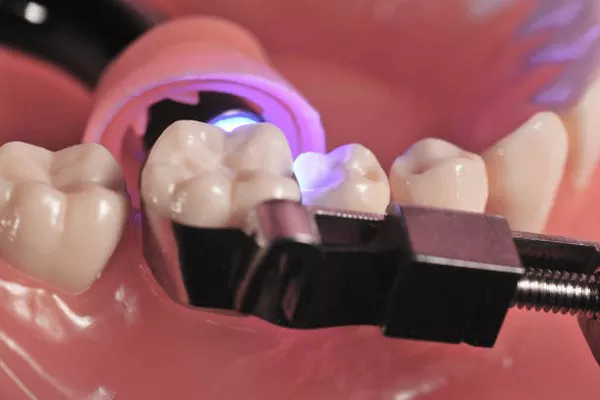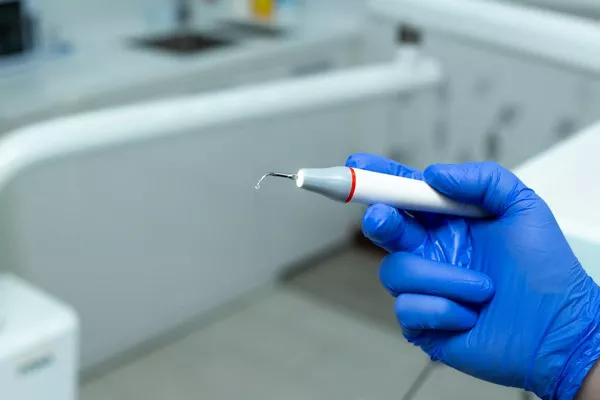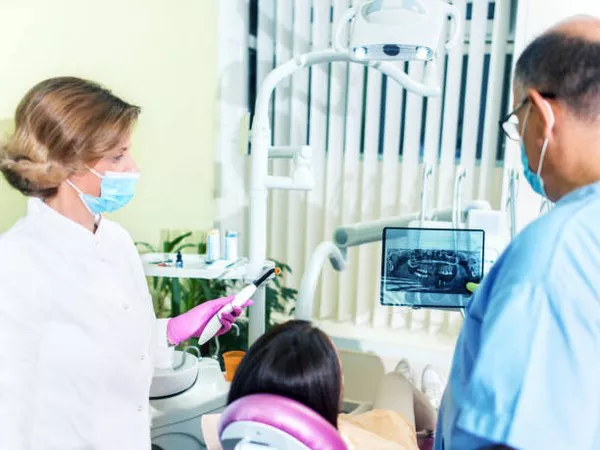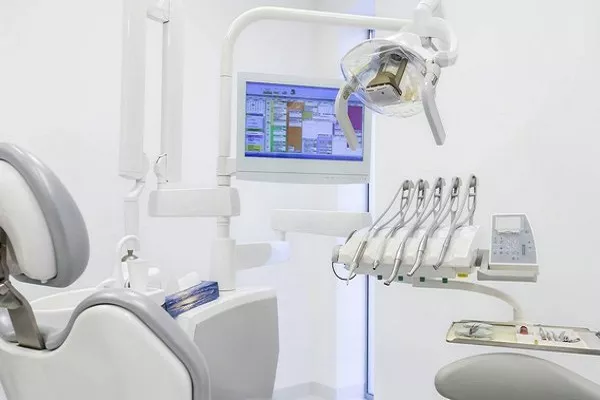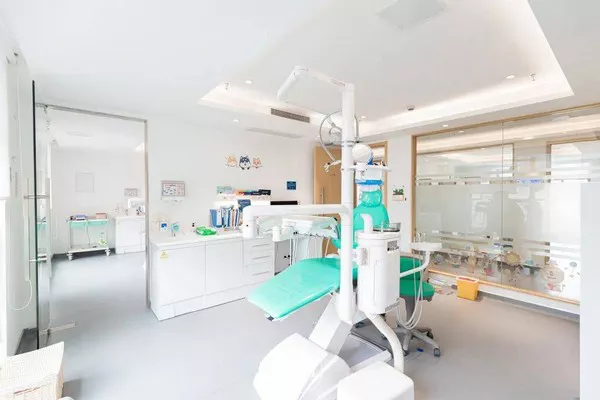Good oral hygiene is an essential aspect of maintaining overall health. Dental health is critical, and regular visits to the dentist are vital for optimal dental care. During dental visits, a dental cleaning is usually performed to remove plaque and tartar buildup from the teeth. There are two types of teeth cleaning: standard and deep cleaning.
Standard Teeth Cleaning
Standard teeth cleaning is a preventive procedure also known as prophylaxis cleaning. It is recommended every six months to remove any plaque and tartar buildup on the teeth. During standard teeth cleaning, the dentist or dental hygienist uses specialized tools to clean the teeth, removing any buildup and polishing the enamel. Standard teeth cleaning is a non-invasive procedure and typically does not require any anesthesia.
The tools used for standard teeth cleaning include an ultrasonic scaler, hand instruments, and a polishing tool. The ultrasonic scaler uses high-frequency vibrations to remove any hardened tartar from the teeth, and the hand instruments are used to remove any remaining debris. Finally, a polishing tool is used to polish the teeth, leaving them feeling smooth and clean.
The benefits of standard teeth cleaning include the removal of plaque and tartar, the prevention of gum disease, and the prevention of cavities. Regular dental cleanings can also help to detect any dental issues early, allowing for timely treatment.
Standard teeth cleaning is recommended every six months for most individuals, and the procedure usually takes approximately 30 minutes to complete.
Deep Teeth Cleaning
Deep teeth cleaning, also known as scaling and root planing, is a more in-depth cleaning procedure than standard teeth cleaning. It is usually recommended for individuals who have significant buildup of plaque and tartar below the gumline, resulting in gum disease. Deep cleaning is necessary to remove any hardened plaque and tartar, bacteria, and other debris from the roots of the teeth, promoting healthy gums and preventing further damage.
During deep teeth cleaning, the dentist or dental hygienist will use specialized tools to remove plaque and tartar buildup from the roots of the teeth. This process may require local anesthesia to ensure the patient is comfortable during the procedure.
The benefits of deep teeth cleaning include the removal of bacteria and debris from the roots of the teeth, preventing further damage to the gums and teeth. Deep cleaning can also help to reverse gum disease in its early stages.
Deep cleaning is typically recommended for individuals with moderate to severe gum disease, and the procedure may be performed over multiple appointments to ensure thorough cleaning.
Key Differences Between Standard and Deep Teeth Cleaning
Dental cleanings are an essential part of maintaining good oral hygiene. While regular cleanings are important, sometimes more in-depth cleaning may be necessary. Two types of dental cleaning that are commonly recommended are standard and deep teeth cleaning.
Here are some key differences between the two:
-
Purpose
The primary difference between standard and deep teeth cleaning is their purpose. Standard cleaning is used to remove plaque and tartar buildup on the surface of teeth, while deep cleaning is used to remove bacteria and buildup from below the gum line.
-
Procedure
The procedure for standard cleaning involves the use of a scaler to remove plaque and tartar buildup from the surface of teeth. The dentist or hygienist will also polish the teeth to remove surface stains. In contrast, deep cleaning involves scaling and root planing, which involves cleaning the tooth surface as well as the roots of the teeth.
-
Time
Standard cleaning typically takes around 30 minutes, while deep cleaning can take up to two hours, depending on the extent of the cleaning required.
-
Anesthesia
Another key difference between the two is that deep cleaning often requires local anesthesia. This is because the cleaning process can be uncomfortable and even painful, especially if there is significant buildup below the gum line.
-
Frequency
Standard cleaning is recommended every six months for most patients, while deep cleaning is usually recommended for those who have periodontal disease or other issues with gum health. The frequency of deep cleaning can vary depending on the severity of the condition.
-
Cost
The cost of standard cleaning is usually lower than that of deep cleaning. This is because standard cleaning is a routine procedure that is generally covered by dental insurance, while deep cleaning may not be covered and can be more expensive due to the additional time and effort required.
In summary, standard cleaning is a routine dental cleaning that is performed to remove surface plaque and tartar buildup, while deep cleaning is a more intensive procedure that is performed to remove bacteria and buildup from below the gum line. Deep cleaning may require local anesthesia and can be more expensive than standard cleaning. Both types of cleaning are important for maintaining good oral hygiene and preventing dental problems.
Which One is Right for You?
Regular dental cleanings are essential for maintaining good oral health, but sometimes more in-depth cleaning may be necessary. There are two types of dental cleaning that are commonly recommended: standard cleaning and deep cleaning. Knowing the differences between the two can help you determine which type of cleaning is right for you. Here are some points to consider:
-
Current oral health
Your current oral health is the most important factor to consider when deciding between standard and deep cleaning. If you have healthy teeth and gums, standard cleaning is likely sufficient to maintain your oral health. However, if you have periodontal disease, deep cleaning may be necessary to prevent further damage.
-
Level of plaque and tartar buildup
Plaque and tartar buildup can vary from person to person, and some people may have more significant buildup than others. Standard cleaning is typically sufficient for removing surface-level buildup, while deep cleaning is necessary for removing buildup below the gum line.
-
Comfort level
Standard cleaning is generally comfortable and painless, while deep cleaning can be uncomfortable and even painful, especially if anesthesia is required. If you have a low pain tolerance, standard cleaning may be a better option for you.
-
Cost
The cost of dental cleanings can vary depending on the type of cleaning and your insurance coverage. Standard cleaning is typically less expensive than deep cleaning and is often covered by insurance. If cost is a concern for you, standard cleaning may be a better option.
-
Frequency of cleanings
The frequency of dental cleanings can vary depending on your oral health and risk factors for dental problems. For most people, standard cleaning every six months is sufficient, while those with periodontal disease may require more frequent deep cleanings.
-
Your dentist’s recommendation
Ultimately, your dentist is the best resource for determining which type of cleaning is right for you. They will evaluate your oral health and recommend the best course of action.
In summary, the decision between standard and deep cleaning depends on several factors, including your current oral health, level of buildup, comfort level, cost, frequency of cleanings, and your dentist’s recommendation. Regular dental cleanings are essential for maintaining good oral health, and working with your dentist to determine the best type of cleaning for you can help ensure that you are taking the best care of your teeth and gums.
Recommended article: What qualifies for scaling and root planning





